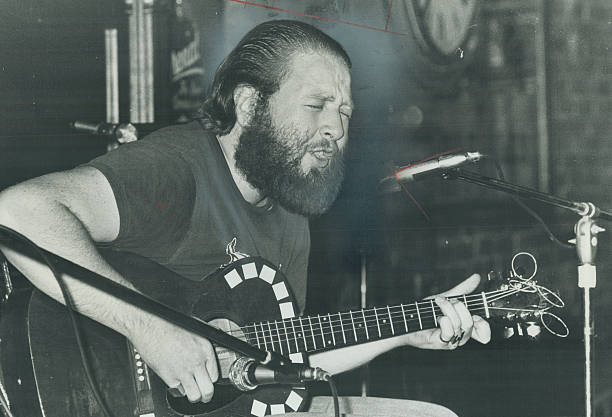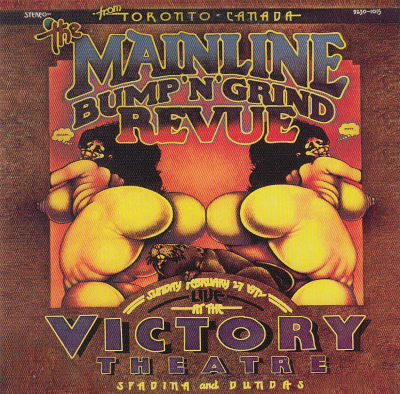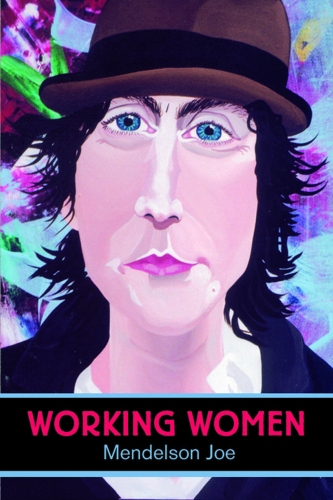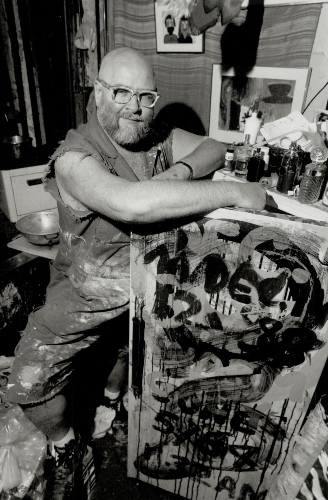Music journalism, books and more
Mendelson Joe: Outspoken artist blended music and art with activism
It surprised no one who knew him that Mendelson Joe would choose to die entirely on his own terms.
In a Feb. 7 post on his website titled “That’s It Folks,” the prolific, self-taught musician, painter and activist who had advanced Parkinson’s disease, wrote: “I have ended my job as multi-media artist with the provision of MAID (Medical Assistance in Dying).” Unable to resist a last chance to advocate his beliefs, he added: “I see MAID as a sign of a civilized society. To be born Canadian is a great blessing. We have free speech. We have healthcare. We have MAID. Thank you, Canada.” Mr. Joe was 78.
Those closest to him remember a unique man, unwavering in his views and blunt in delivering them. But those same friends also cite his kindness, loyalty and humour. “The last thing Joe said to me was ‘Until we meet again, bon appétit,” recalled Dr. Philip Berger, who joined him at numerous political demonstrations. “Even as he was facing death, he made me laugh. I’ve known Joe for 47 years and he was always like that, balancing his characteristic inflexibility with something wry, witty or just plain silly.”
 He brought the same balance to his music and paintings. Beginning with his popular blues-rock band McKenna Mendelson Mainline, co-founded with guitarist Mike McKenna, and throughout his long solo career, Mr. Joe wrote songs that were simple, direct and to the point. But they were always political and playful at the same time. His 1984 greatest hits collection, The Name of the Game Ain’t Schmaltz, included a slam on lawyers called “They Will Take Your Pants.”
He brought the same balance to his music and paintings. Beginning with his popular blues-rock band McKenna Mendelson Mainline, co-founded with guitarist Mike McKenna, and throughout his long solo career, Mr. Joe wrote songs that were simple, direct and to the point. But they were always political and playful at the same time. His 1984 greatest hits collection, The Name of the Game Ain’t Schmaltz, included a slam on lawyers called “They Will Take Your Pants.”
Mr. Joe’s brightly coloured paintings, often described as primitive or naïve in style, also had an edge. Some of his gorgeous landscapes carried messages warning about nuclear energy or environmental destruction. His portraits, especially those of politicians he found reprehensible, could be viciously caustic. Of all Mr. Joe’s many paintings, his most famous – by far – is his portrait of former prime minister Brian Mulroney, with buttocks for a face and an anus for a mouth.
Commercial success eluded Mr. Joe, although the output and value of his artwork (he began painting in 1975) picked up after he left Toronto in 2000 and settled in Emsdale, Ont., near his beloved Algonquin Park. “Joe was his own worst enemy,” noted writer David Hayes, a bassist on some of Mr. Joe’s recordings. “He just wouldn’t play the game.”
Ray Danniels, longtime manager of Rush and owner of Anthem Records, agreed. “I tried managing Joe for a while and released a couple of his albums, until I realized he was never going to compromise to reach a wider audience. But he certainly made himself known to a lot of people.”
Mr. Joe’s notoriety spread far and wide, as much for his one-man protests and tireless letter-writing to editors, politicians and media personalities as for his art. Among those posting affectionate tributes on social media following the news of his death were comedian Rick Mercer, Canada’s United Nations representative Bob Rae and Rush’s Geddy Lee, who had encouraged Mr. Danniels to sign Mr. Joe in the first place. “Joe has left the planet,” wrote Mr. Lee on Instagram. “He was an outspoken, big-thinking human, truly a giant. R.I.P. my friend.”
Birrel Josef Mendelson was born in Toronto on July 30, 1944, the second child of Harry Mendelson, a lawyer, and his homemaker wife, Elsie. (He adopted the reversed stage name of Mendelson Joe in 1975.) In his autobiography Alien: The Strange Life and Times of Mendelson Joe, Mr. Joe described his father as having a “cruel nature” and both of his parents as chainsmokers and "closet alcoholics." After the family moved to Maple, a rural community north of Toronto he picked up his sister’s discarded guitar and fell in love with music.
 After graduating from Richmond Hill High School, Mr. Joe, by then standing over six feet tall and weighing 225 pounds, enrolled at the University of Toronto and pursued football and music while earning his Bachelor of Arts degree. Before long, he was performing in Yorkville coffeehouses, singing folk and blues solo and performing in the Old Upper Canada Ragtime Mama Jugband. He met and married Lea, nicknamed Flea, in 1966 and earned money making leather belts and vests for the Mr. Casual clothing store.
After graduating from Richmond Hill High School, Mr. Joe, by then standing over six feet tall and weighing 225 pounds, enrolled at the University of Toronto and pursued football and music while earning his Bachelor of Arts degree. Before long, he was performing in Yorkville coffeehouses, singing folk and blues solo and performing in the Old Upper Canada Ragtime Mama Jugband. He met and married Lea, nicknamed Flea, in 1966 and earned money making leather belts and vests for the Mr. Casual clothing store.
A classified ad in 1968 led Mr. Joe to Mr. McKenna and the two formed the infamous blues-rock band that bore their names. With Mr. Joe on lead vocals and guitar, the group toured England and Australia and recorded several albums, including its acclaimed debut, Stink, which featured his song “Beltmaker.” But it was Mainline’s Bump ‘n’ Grind Revue, first held in early 1972 and reprised on New Year’s Eve 1973 at Toronto’s Victory Burlesque theatre, that made the biggest stink.
As the band performed its raunchy blues with its members dressed in drag, dancers with names like Mother Superior and Heaven Lee stripped down to their Mainline G-strings. Martin Melhuish, in Zoo magazine, described Mr. Joe as a “hulking, bearded form, clad in a black slip with gartered black nylons, bulging silk undies, hair in a pony tail, a pair of unbuckled work boots and enough makeup on his face to cause a jump in the value of Helena Rubinstein stock.” Scandalous for the times, the Bump ‘n’ Grind was filmed by a young Moses Znaimer for TVOntario.
 The remainder of the 1970s was tumultuous for Mr. Joe, who quit Mainline twice, claiming band politics and the music business were driving him crazy, went through a divorce and released three solo albums. He also met a new love, a stripper named Annie Smith he called “Nurse Annie” and considered his soulmate, until they parted ways in 1981.
The remainder of the 1970s was tumultuous for Mr. Joe, who quit Mainline twice, claiming band politics and the music business were driving him crazy, went through a divorce and released three solo albums. He also met a new love, a stripper named Annie Smith he called “Nurse Annie” and considered his soulmate, until they parted ways in 1981.
Painting kept the heartbroken Mr. Joe sane. From a crowded storefront studio on Ossington Avenue, he painted constantly while continuing to write and record music. Laurie Brown had not yet embarked on her broadcasting career when she answered Mr. Joe’s long-running classified ad that read: “Nude female models wanted. No hanky panky.”
“I’d heard about him and wanted to learn his story – maybe it was the budding interviewer in me,” recalls Ms. Brown, who went on to become a MuchMusic VJ and then a CBC radio host. “My posing for him didn’t start off nude,” she added. “It began with him painting my portrait, getting to know each other and me feeling secure. If you were a woman in his studio, there was no one you could feel more respected by than Joe.”
His appreciation of women (two exhibitions, The Meaning of Life and 24 Nipples, focused on the female breast) went beyond the artistic. Mr. Joe was unequivocal that women are the only hope for the world. He also painting a series called Working Women that included over 300 portraits of women from all walks of life, all clothed – ”even the people who work in the sex trade,” he pointed out in Alien.
One of Mr. Joe’s portraits featured Denise Bellamy, whom he had befriended when she was a lawyer. “Joe always thought I should become a judge,” Ms. Bellamy recalls, “because he said I had a lot of common sense. It was part of his firm belief that half the judges, in fact half of the positions of power in our society, should be held by women.” Ms. Bellamy became a judge in Ontario’s Supreme Court of Justice in 1997 and Mr. Joe painted a second portrait of her. But it didn’t stop there.
 “Joe asked me to send him judgments after I’d written them,” Ms. Bellamy explained. “Sometimes he agreed with me, but other times he took great exception to them and wanted to argue.” She added: “He really kept me honest and on my toes. I loved that about him.” That sentiment is shared by many recipients of his letters and postcards.
“Joe asked me to send him judgments after I’d written them,” Ms. Bellamy explained. “Sometimes he agreed with me, but other times he took great exception to them and wanted to argue.” She added: “He really kept me honest and on my toes. I loved that about him.” That sentiment is shared by many recipients of his letters and postcards.
Along with painting and making music, Mr. Joe never stopped crusading for a better world. He banned smoking at his concerts (the first Toronto musician to do so), once held a 100-day hunger strike to protest the Darlington nuclear reactor and, together with Lisa Cherniak, co-founded the Artists Against Racism organization in 1992. “He had no use for racists,” confirmed friend and fellow artist-activist Anne Hansen, “sycophants, liars, hypocrites or dinner parties. The bane of his existence was public indifference to the collective human plight.”
In 1992, the Canada Council awarded Mr. Joe a $32,000 grant to paint a series called Liars, portraits of individuals who betray the public trust. Along with Mr. Mulroney, Mike Harris, Stephen Harper, Preston Manning and Stockwell Day are among the featured politicians. Recently, he painted a sinister-looking portrait of Ontario’s premier, titled Doug, the Thug, Ford.
“Joe could be very judgmental about what people did and what they made of their careers,” said musician John Oswald, who played saxophone on some of Mr. Joe’s recordings and once danced with him in a performance of Swan Lake, with big Joe dressed in a tutu with feather dusters gaffer-taped to his forearms for wings. “Politicians are one thing, but there were musicians Joe would be incredibly enthusiastic about – until he condemned the choices they made.”
 Singer Gwen Swick agrees. “I once worried about what I’d do if a company wanted to use one of my songs in a commercial,” she said. “I realized I’d never be able to do it because I’d have to explain it to Joe, and that,” adds Ms. Swick with a laugh, “would be too difficult.”
Singer Gwen Swick agrees. “I once worried about what I’d do if a company wanted to use one of my songs in a commercial,” she said. “I realized I’d never be able to do it because I’d have to explain it to Joe, and that,” adds Ms. Swick with a laugh, “would be too difficult.”
Still, Mr. Joe recognized his own foibles and contradictions, admitting being a hypocrite for crusading for the environment while riding his beloved motorcycles. Never precious in his choice of words, he called himself and other artists “whores,” and their agents and publicists “pimps,” much to the embarrassment of some.
But that honesty was also what many admired about the artist, who released over 30 albums and produced thousands of paintings, some of which are held by the Portrait Gallery of Canada and the Canada Council Art Bank. “Joe was the real deal, someone who always spoke his mind and never compromised,” Ms. Brown said. “He’s a reminder to artists to avoid mediocrity, stay true to themselves and never worry what others think.”
Mr. Joe was predeceased by his sister, Cybil. He leaves his wife and agent, Karen Robinson, and nephews, Dorian, Eric and Jeremy Young.
Originally published in The Globe and Mail on February 22, 2023


